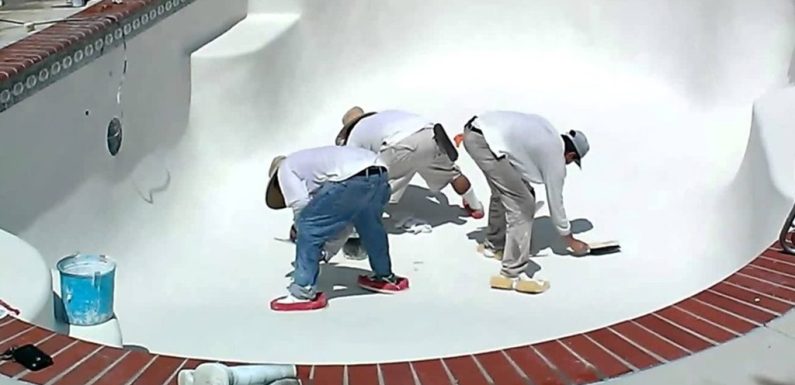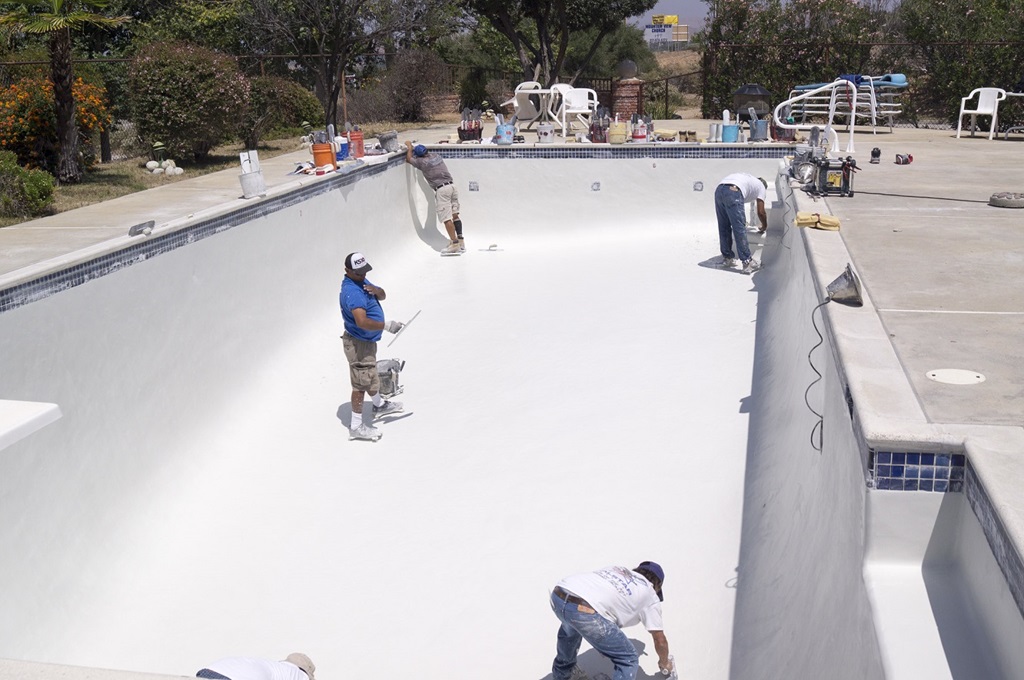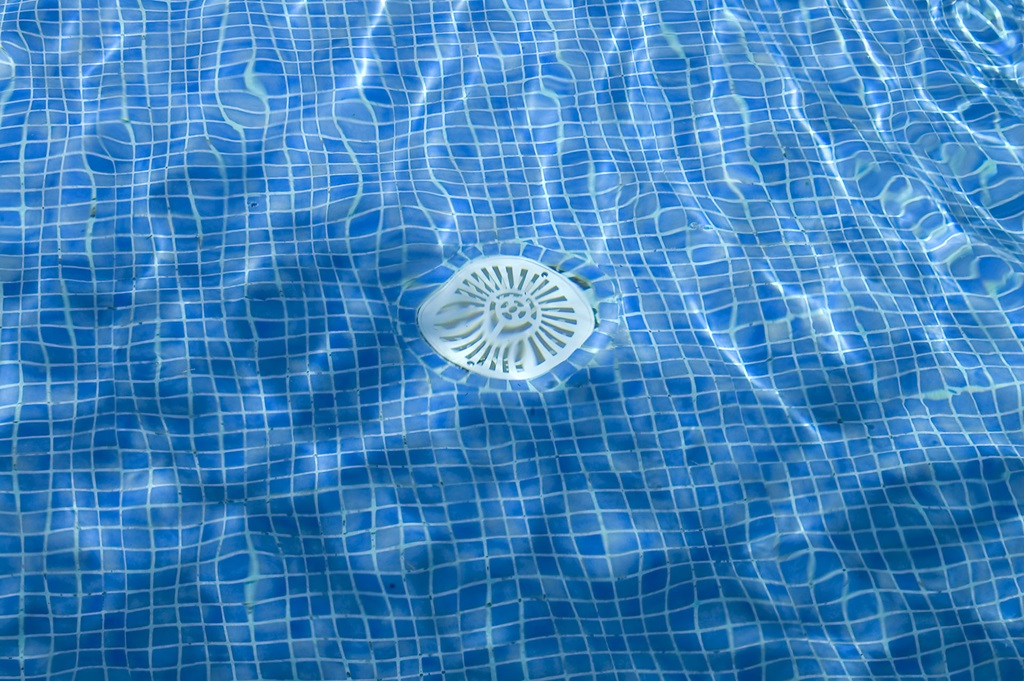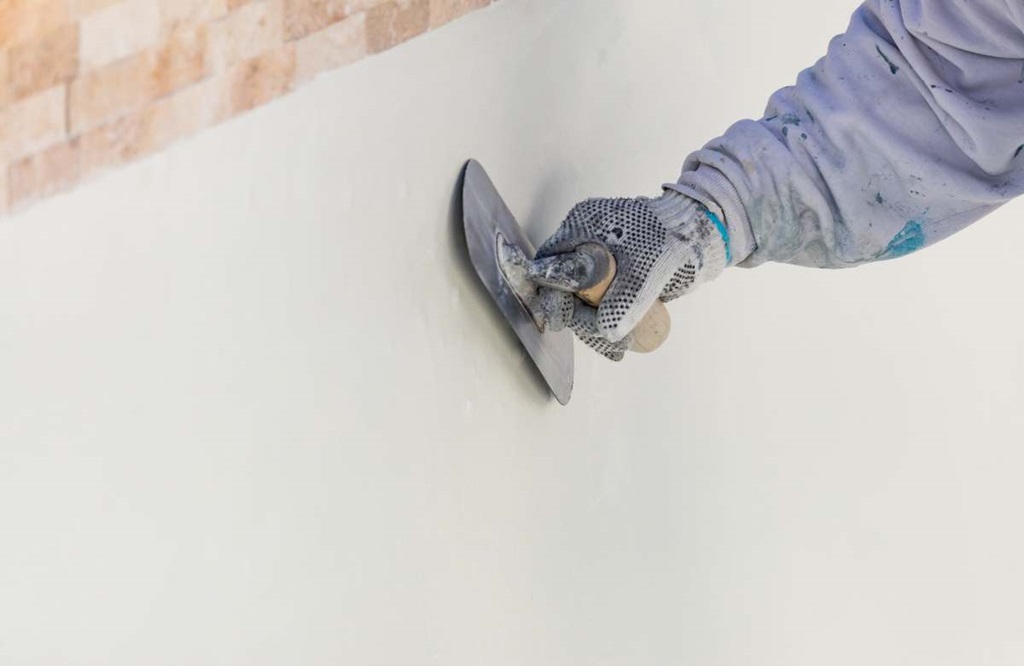
If you’re a pool owner, chances are you’ll need to replaster your pool at some point. Pool plaster, also known as marcite, is a type of interior finish made up of white cement, aggregates, and additives. It provides a smooth, attractive, and waterproof surface inside your pool. However, pool plaster doesn’t last forever. After repeated exposure to water, chemicals, sun, and swimmer traffic, it eventually becomes rough and porous. When this happens, it’s probably time for replastering.
Replastering renews and restores your pool’s surface. You may opt to simply match your existing plaster color and texture. Or you can use the replastering a pool process as an opportunity to change your pool’s aesthetic completely with new plaster designs and colors. We’ll delve into plaster options later on. First, let’s look at signs indicating your pool needs to be replastered.
Signs It’s Time for Replastering a Pool
How can you tell if your pool is due for replastering? Here are some common signs:
- Rough plaster surface that feels abrasive on feet
- Visible pitting, cracks, or hollow spots
- Discoloration or faded plaster
- Constant pool leaks
- Calcium deposits and scaling
- Stained plaster
- Compromised structural integrity
If one or more of those describe the current state of your pool plaster, it likely needs to be replaced. Catching deteriorating plaster in time allows you to replaster according to your schedule instead of on an emergency basis. Maintaining your plaster regularly with chemical balances and cleaning can extend its lifespan. However, every plaster has an expiration date.
When planning for a pool replastering project, there are several key factors to consider beforehand. Thinking through details ahead of time allows the process to go as smoothly as possible.
Choosing New Plaster Design and Color
One of the most exciting parts about replastering is selecting a new design and color scheme. Today’s plaster options go far beyond basic white. There is an abundance of dazzling colors, multi-colored blends, and eye-catching finishes to complement your backyard vision.
Plaster Color Selection
Do you want an understated, natural pool interior? Or perhaps something more dramatic and vibrant? Most pool plaster manufacturers offer color options in five main categories:
- White: Classic, versatile, and luminous. White plaster diffuses sunlight evenly throughout water.
- Gray: Sophisticated neutrals ranging from soft dove gray to near-black charcoal. Disguises algae growth.
- Blue: Shades of light to medium blue for a cooling, tropical aesthetic. Needs frequent chemical balancing.
- Green: Earthy, organic tones from seafoam to emerald. Complements landscaping.
- Unique: Dynamic colors including aqua, magenta, gold, red, and more. Makes a bold statement.
Plaster blends seamlessly combine several colors in one application for visual depth and dimension. There are also glow-in-the-dark and metallic plasters available too. With so many options, select colors that excite you and align with your outdoor living vision.
Plaster Finishes

Along with colors, there are different plaster finishes to consider:
Standard White Marcite
A smooth plaster finish that refracts light evenly to avoid hot spots. The most common choice.
Pebble Finish
Multisized aggregate exposed for texture, slip resistance, and visual appeal. Requires more maintenance.
Quartz Finish
Glittering sand-like quartz beads embedded for shimmer and durability. Stays cooler than standard plaster.
Tile Finish
Glass mosaic tiles can be installed over plaster for a twinkling surface. Pricey but dazzling.
Once you decide on color and finish, sourcing the plaster and hiring an experienced pool plastering contractor is next.
Finding the Right Pool Plaster Contractor
Replacing pool plaster requires specialized skills, tools, and materials. Therefore, seek out a professional contractor that solely focuses on pool replastering instead of a general pool service company. Ask friends for referrals or search online reviews.
When vetting contractors, here are key qualifications to look for:
- Solid reputation for quality workmanship and satisfied customers
- Extensive experience successfully replastering pools similar to yours
- Fully licensed and insured
- Workers specialize in pool plaster application
- Provides multiple plaster samples to view color/texture options
- Carries proper equipment for surface preparation and plaster application
- Has availability aligning with your project timing needs
Ideally, choose a local contractor located nearby to check references easily and provide future servicing if needed. Meet with prospects in-person and get quotes from a few companies before deciding. Make sure you understand what is all included so bids can be compared accurately.
Preparing Your Pool for Replastering
Once you hire a qualified plaster contractor, they will guide you in prepping your pool properly before the plaster crew arrives. Thorough surface preparation is crucial for successful bonding and longevity of new plaster. It involves fully draining the pool, intensive cleaning, and removing all existing plaster.
Drain and Clean Pool

About 2-3 weeks before replastering, your pool needs to be drained completely using a submersible pump. Pool walls and floor need to be brushed vigorously with a stiff bristle brush to remove all algae, stains, oils, scale and debris that could prevent plaster adhesion. Any necessary tile or coping repairs should be done once the pool is empty.
Remove All Furniture and Fittings
Taking out ladders, rails, light fixtures, automatic pool cleaner, chlorinator, and filters prevents damage during the replastering process. The contractor may handle removing and reinstalling large fixed elements like diving boards, slides, and rock waterfalls if needed.
Etch and Bond Surface
Next, the bonding base underneath old plaster must be roughed up through a process called etching. This scarifies the surface so new plaster fully adheres. Contractors use hydrochloric acid followed by pressure washing to efficiently etch and clean.
They follow etching with a concrete bonding agent to further prime the pool for fresh plaster. If cracks and faults exist in your pool foundation, discuss structural reinforcement options with your contractor.
Setup Protection and Ventilation
Once etched and bond, keep debris out by covering nearby equipment plus landscaping with tarps. Proper ventilation lets air circulate to aid plaster curing. Turn off automatic pool cleaners and timers to avoid accidental activation before completing replastering.
With prep work fully handled by your contractor, the pool awaits application of gorgeous new plaster.
Plaster Application Process
It takes skill, speed, and the right materials to plaster pools properly. Spraying and troweling plaster onto etched concrete is physically demanding work. Contractors have specialized equipment and techniques perfected over years of experience. They also bring all necessary plaster ingredients and tools on-site to efficiently replaster your pool in a single day.
Plaster Mix and Spray Process
Crews mix fresh plaster in motorized paddle machines before spraying onto pool surfaces at high velocity to compact tightly. Combining cement, aggregates, pigments and additives makes plaster pliable enough for spraying and troweling. Multiple finish coats build up final thickness and smoothness.
Troweling and Shaping Finish Coats
As spray coats set up, plasterers hand trowel final finish passes, smooth out high spots, eliminate pinholes, maintain consistency across pool geometry and ensure correct color uniformity meets standards for the new chosen plaster.
Timing Sequence and Layering
Crews work swiftly in sequence around your pool plastering floors then walls last. Plaster begins setting up 30-60 minutes after application. So they work in small sections methodically. New plaster bonds and strengthens as it cures over the next few days. Finish troweling refines texture and polish. Total replastering time averages 8-12 hours depending on pool size and complexity.
Clean Up and Refill
Once fully plastered, crews remove protective tarps and thoroughly clean up the space around your pool before refilling it. Clean water is added slowly over a few days allowing new plaster to cure properly. Initial refilling often uses a garden hose to avoid erosion damage from fire hoses and water truck force. Contractors return once the pool is nearly full to reinstall ladders, fittings and equipment.
Caring For New Plaster As It Cures
Fresh plaster needs conscientious care as it finishes curing over the next few weeks after application. Keep the following tips in mind as your new pool surface hardens:
Keep Climate Stable
Avoid quick temperature changes from very warm to very cold by leaving pool covers off the first month. Drastic temperature flux can crack plaster while still fragile during its early cure phase.
Hand Wash Gently
Do not scrub or use automatic pool cleaners on new plaster for at least three weeks. Gentle hand wiping of walls removes dust and debris as needed, but let plaster cure before using normal pool maintenance tools.
Maintain Proper Water Chemistry
Carefully monitoring and adjusting your water’s pH, alkalinity and calcium levels protects newly cured plaster. Test water twice weekly and use extreme caution with chemical dosing for the first month. Don’t let excessive use stain or scale too early.
Retain Constant Water Levels
Maintain consistent water levels for the first few weeks, letting new plaster fully harden before periodic draining or refilling. Keep an eye out for small leaks that could signal unseen hollow spots behind plaster.
Staying vigilant while new plaster cures keeps your pool finish smooth and pristine for years of enjoyment.
Costs of Professional Pool Replastering

What’s the cost to replaster an existing concrete pool? Professional replastering averages $7,000 to $10,000 depending on these factors:
- Pool size – More surface space equals more time and materials.
- Access issues – Landscape or structural impediments cost more.
- New color/finish – Fancy aggregates, tiles or metallic add extra expense.
- Location – Higher labor rates in some geographic regions.
- Surface preparation needs – Heavily stained pools require more work to etch cleanly.
- Season and demand – Contractors may charge more during peak seasons.
Receive quotes from a few reputable local plastering companies to compare pricing for your specific project. Their bid should detail what exact services, products, and timeline is included. Consider price alongside reviews, experience and professionalism when hiring.
Although replastering requires a hefty upfront investment, restoring your pool enhances aesthetics, sanitation and safety while increasing property value. Take time to carefully choose colors and finishes you’ll enjoy for years while avoiding future leaks or damage. Protecting new plaster while curing ensures it ages beautifully. With routine care, fresh plaster should last upwards of a decade before needing replacement again.
Conclusion
Replastering brings exciting aesthetic changes that can completely transform your backyard pool and landscape visually. However, the process involves critical preparation, plaster curing vigilance, potential maintenance changes and a major financial investment. Being an informed pool owner before taking the replastering plunge allows you to choose colors, textures and contractors wisely. Ask questions, gather quotes and understand what’s entailed so there are no unwelcome surprises. With diligent plaster application plus patient curing care, your refreshed pool surface sparkles for years ahead.
FAQs
How long does new pool plaster last?
With proper care and water chemistry, plaster lasts 7-15 years on average before requiring replacement again. Pebble and quartz finishes tend to last a few years longer.
Can I replaster over existing plaster?
Yes, but only once or twice before needing to resurface the concrete underneath. Completely removing old plaster first allows for the soundest bond.
When’s the best time of year to replaster a pool?
Late spring and early fall when temperatures are mild provides ideal plaster curing weather. Avoid extreme heat or cold during the first few weeks.
How soon can I swim after replastering?
It’s best to wait at least 14 days before regular swimming or hot tub use. Let new plaster fully cure first to lock in smoothness and sealing. More delicate finishes may need longer.
Will my water need rebalancing after replastering?
Yes, brand new plaster substantially alters your water’s chemistry. Test and adjust regularly for the first month to prevent dissolution or scaling while plaster cures.

